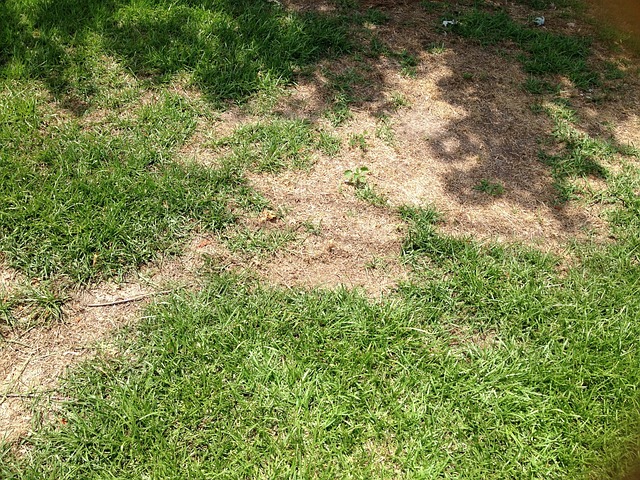
Patches of discoloured grass are a sure sign of an unhealthy lawn. But how does a lawn go from healthy green grass to patchy browns and yellows? Read on to find out.
Patchy Grass
There are many possible reasons for yellow or brown patches on a lawn. Some are simple, and relatively easy to deal with, but others are a tad more complicated.
Drought
One simple reason for a patchy lawn is drought. In the summer, less rain falls, so the grass is deprived of the moisture it needs. If grass doesn’t get enough water, it loses its colour and eventually dies. The solution to this is to water your grass between 4am and 10am roughly once a week. You should also aerate your lawn to ensure more water gets to the roots. This should help fix the problem.
Mowing a Dry Lawn
Regularly watering your grass should also prevent the appearance of yellow grass after mowing your lawn. Here are some more mowing tips to help you keep your lawn looking good:
• Don’t cut the grass too short
• Keep your mower blades sharp to ensure they don’t damage the grass
• If you have a petrol mower, refill it away from your lawn to avoid spilling petrol on the grass
READ MORE: How to Cut Grass
Pet Urine
Dogs might be man’s best friend, but they are not so friendly to our lawns. If they’re not digging them up, they’re urinating on the grass. The nitrogen levels in dog urine are so high that they ‘scorch’ the grass. If your lawn is covered in brown patches surrounded by little ‘halos’ of healthier grass, this could be the reason. You can stop this by encouraging Fido to go elsewhere, or by using a product like Dog Rocks to make the urine less harmful. Irrigate the area once the deed is done to help water down the nitrogen levels and mitigate the problem.
Lawn Disease
There are various lawn diseases you might encounter, from red thread disease to fusarium patch disease to snow mould and more.
Prevention is better than cure for most of these issues. Aeration, fertiliser, watering, good draining, and scarification can all help prevent lawn disease. Here at Lawn Weed Expert, we offer a wide range of lawn disease control services.
Insects
There are plenty of insects whose presence in your garden should be celebrated. Worms, moths, bees, and butterflies are all signs of a thriving garden.
Some insects, however, are not welcome in the garden. Leatherjackets and chafer grubs are the ones most likely to affect the lawn itself.
Leatherjackets are crane fly larvae, and feed on grass and plant roots. This kills off the grass, causing it to turn yellow as it dies, and eventually leading to bare patches of lawn. You may also see patches where birds have pecked at the grass – crows and magpies in particular eat leatherjackets. We offer a comprehensive leatherjacket control service to get rid of these pests, because insecticide is the only surefire way of dealing with them.
If your lawn sits on sandy soil, you may be prone to chafer grubs. These are the larvae of the chafer beetle and, just like leatherjackets, they will eat away at the roots of the grass. Birds also love eating chafer grubs, so this will again cause further lawn damage. We can easily manage chafer grub infestations for you, so let us know if you see your lawn suffering.
READ MORE: Protect Your Lawn From Leatherjackets
Lawn Maintenance
One simple cause of patchy grass is poor lawn maintenance – a problem relatively easy to solve.
Aeration, scarification, regular mowing with sharp blades, regular watering, and moderate use of lawn feed will all help keep your lawn healthy for longer.
If your lawn is suffering from patchy grass, please do get in touch and we will be more than happy to help you fix the problem.
Book a Free Lawn Survey
READ MORE: Lawn Care Advice